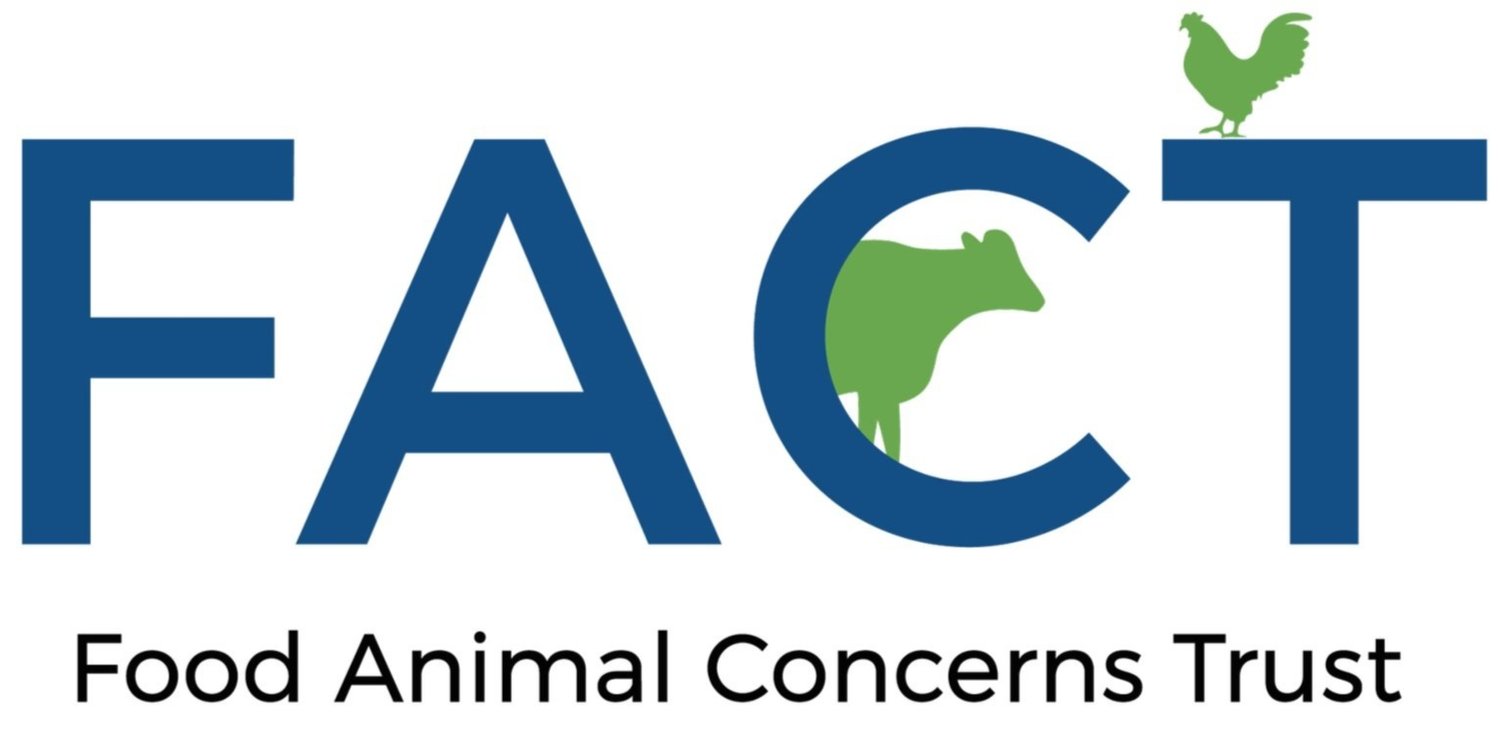Factory Farm Gas is a False Climate Solution
And is Just Another Subsidy for Giant Animal Feeding Operations
By Steve Roach, FACT’s Safe and Healthy Food Program Director
Dairy cows in a giant feeding operation.
Last year was the world’s warmest year since 1850, when global temperatures were first recorded, and there were 27 weather disasters in the U.S. with losses exceeding 1 billion dollars each. With climate change, the number of weather-related disasters is increasing, as is their severity. This has serious impacts on animal agriculture and animal agriculture is also a major contributor to greenhouse gasses that are driving climate change. You can read more about the complicated relationship between animal agriculture and climate change along with some things we as a society should do to reduce the risk of weather disasters and other costs of climate change in FACT’s Position Paper on Climate Change.
One thing FACT is concerned about is false solutions to climate change. With these false solutions comes the real risk that industrial animal agriculture - which is a large source of climate-changing emissions - will use false climate solutions as a new source of revenue to put even more animals in unhealthy confinement facilities. The major meat companies are already falsely marketing their beef and pork as climate-friendly while being major sources of greenhouse gasses.
One false solution is factory farm gas also known as biogas or as the meat and oil industry likes to call it, renewable natural gas. Factory farm gas is made by collecting animal waste and putting it into an airless space called a biodigester where bacterial activity breaks the manure down, releasing gases - mostly methane and carbon dioxide - along with lots of other waste that is then spread on fields. The methane is then collected and can be burned as a fuel to produce energy.
Factory-farmed gas is highly subsidized by both federal and state dollars as a climate solution, but it is only a solution if you ignore all the greenhouse gasses released in the raising of animals before the manure is collected. In addition, factory farm gas facilities are often leaky, and a lot of the methane created is lost to the atmosphere. What is left over after the gas is removed, the digestate, ends up polluting water creating problems in both surface and well water. This is on top of all the harm to animals, workers, and neighbors from these giant unhealthy animal-raising facilities.
The public dollars, which are the only reason factory farm gas is profitable, create a new source of revenue for giant animal feeding operations allowing them to keep even more animals in confinement. The biogas creation and capture systems are expensive and only work when you have a lot of animals crowded together making it possible to collect the manure. In the end, factory farm gas is just another subsidy for the meat industry and is contributing to even greater concentration in the livestock industry.
FACT has developed a policy statement on factory farm gas that you can read below:
FACT's vision is that all food-producing animals are raised in a humane and healthy manner. This is incompatible with raising animals in giant confined livestock-raising facilities. FACT opposes factory farm gas schemes (also described as biogas) because these systems, called biodigesters, only work with large numbers of animals in confinement. While promoted as a solution to the climate crisis, factory farm gas further entrenches the current industrial agricultural system. By creating an additional revenue stream for large meat companies through government subsidies aimed at slowing climate change, biodigesters can increase the number of animals raised, countering any climate benefit produced. Increasing animal numbers also increases the other negative impacts of industrial agriculture such as water and non-climate associated air pollution. Factory farm gas is bad for animals, people, and the environment.

